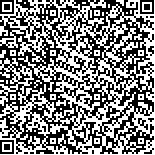| 代元飞,李 杨,曹 亮.老年中晚期食管癌淋巴结引流区预防照射与累及野照射的比较研究[J].肿瘤学杂志,2021,27(12):1011-1016. |
| 老年中晚期食管癌淋巴结引流区预防照射与累及野照射的比较研究 |
| Comparison of Involved Field Irradiation and Elective Nodal Irradiation for the Elderly Patients with Advanced Esophageal Cancer |
| 中文关键词 |
| DOI:10.11735/j.issn.1671-170X.2021.12.B008 |
|
 |
| 中文关键词: 食管肿瘤 老年 放射疗法 累及野照射 淋巴结引流区预防照射 预后 |
| 英文关键词:esophageal neoplasms elderly radiotherapy involved field irradiation elective nodal irradiation prognosis |
| 基金项目:2016年安徽省卫生计生委科研计划项目(2016QK008);滁州市科学技术局重点项目(2018ZD011) |
|
| 摘要点击次数: 973 |
| 全文下载次数: 253 |
| 中文摘要: |
| 摘 要:[目的] 比较累及野照射(IFI)与淋巴结引流区预防照射(ENI)在老年中晚期食管癌患者中的疗效与安全性。[方法] 收集行放射治疗的老年(年龄≥70岁)中晚期食管癌患者88例,分为淋巴结引流区预防照射(ENI)组(41例)和IFI组(47例)。随访观察两组的临床疗效、毒副反应、生存率、治疗失败情况等。[结果] ENI组和IFI组的近期疗效(92.7% vs 91.5%,P=0.836)、1年生存率(80.5% vs 72.3%,P=0.371)、2年生存率(41.5% vs 31.9%,P=0.353)、1年无进展生存率(56.1% vs 42.6%,P=0.205)、2年无进展生存率(9.6% vs 8.5%,P=0.839)、区域失败率(39.0% vs 29.8%,P=0.327),远处转移率(22.0% vs 14.9%,P=0.392)、中位OS(19个月 vs 18个月,χ2=0.002,P=0.967)、中位PFS(13个月 vs 10个月, χ2=1.870,P=0.171)差异均无统计学意义。IFI组≥3级放射性肺炎、≥3级放射性食管炎发生率分别为4.3%、6.4%,明显低于ENI组的17.1%(P=0.048)、22.0%(P=0.034)。单因素分析显示,性别、年龄、T分期、N分期、是否同步化疗是影响预后的因素。多因素分析显示,年龄、T分期、是否同步化疗为独立预后因素(HR=1.253、1.660、2.682,P均<0.05)。[结论] IFI对于老年中晚期食管癌疗效与ENI相似,但毒副反应降低,对老年食管癌患者是合适的选择。 |
| 英文摘要: |
| Abstract:[Objective] To compare the efficacy and safety between involved field irradiation(IFI) and elective nodal irradiation(ENI) for the elderly patients with advanced esophageal cancer. [Methods] Eighty eight patients aged ≥70 years with advanced esophageal cancer were allocated to ENI group(41 cases) and IFI group(47 cases). Clinical efficacy, treatment-related toxicities, patterns of failure were compared between two groups. [Results] There were no significant differences between ENI group and IFI group in short-term efficacy(92.7% vs 91.5%, P=0.836), 1-year overall survival(OS) rate(80.5% vs 72.3%, P=0.371), 2-year survival rate(41.5% vs 31.9%, P=0.353), 1-year progression free survival(PFS) rate(56.1% vs 42.6%, P=0.205), 2-year PFS rate(9.6% vs 8.5%, P=0.839), regional failure(39.0% vs 29.8%, P=0.327), distant metastasis(22.0% vs 14.9%, P=0.392), the median OS(19 months vs 18 months, χ2=0.002, P=0.967), and the median PFS(13 months vs 10 months, χ2=1.870, P=0.171). Grade 3 or higher radiation pneumonitis and esophagitis in IFI were 4.3% and 6.4% respectively, which were significantly lower than those in ENI group(17.1%, P=0.048 and 22.0%, P=0.034, respectively). Univariate analysis showed that gender, age, T stage, N stage and chemoradiotherapy were associated with the prognosis of patients. Multivariate analysis showed that age, T stage and chemoradiotherapy were independent prognostic factors of OS(HR=1.253, 1.660, 2.682;all P<0.05). [Conclusion] The efficacy of IFI was similar to that of ENI in the treatment of elderly patients with advanced esophageal cancer, but irradiation toxicities are reduced in IFI, indicating that IFI is an appropriate treatment option for elderly patients with esophageal cancer. |
|
在线阅读
查看全文 查看/发表评论 下载PDF阅读器 |